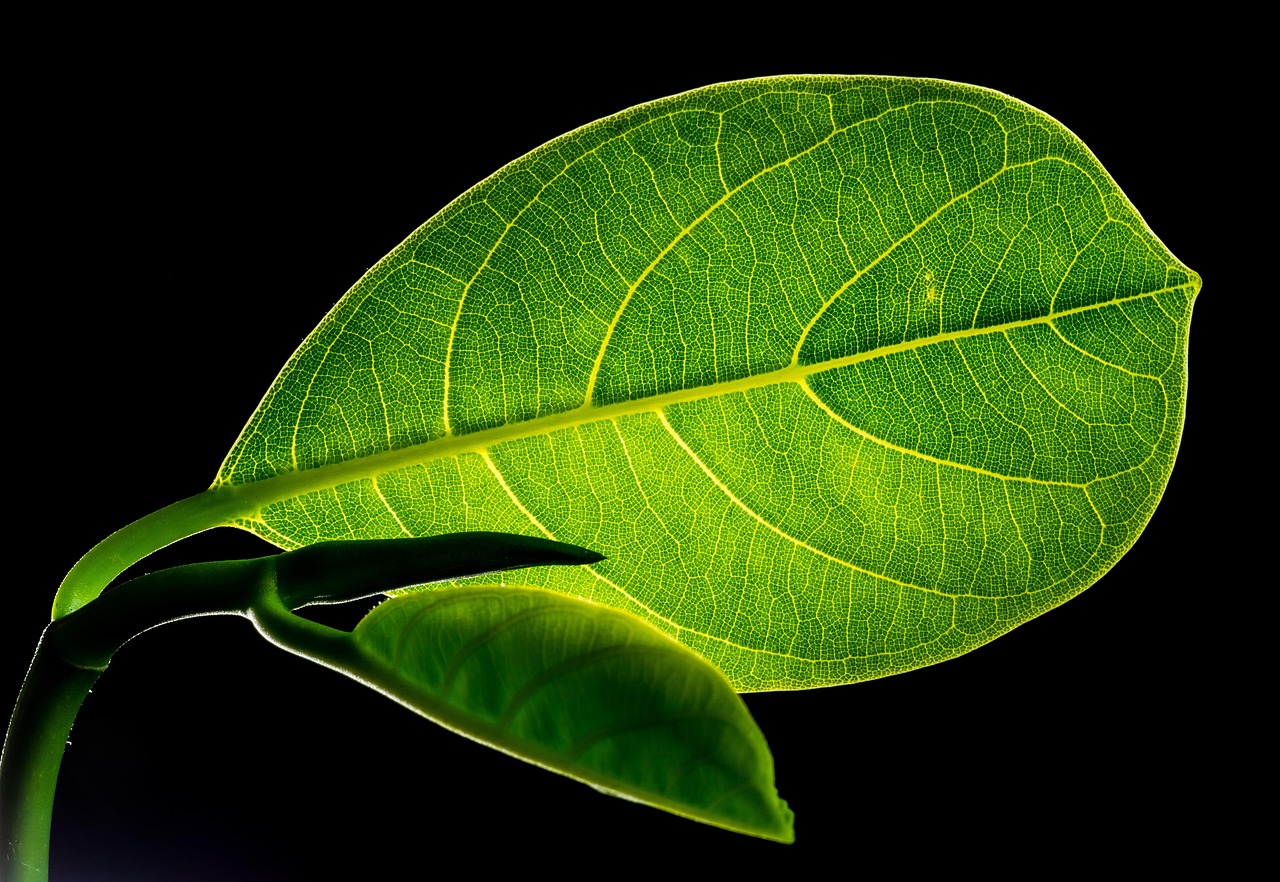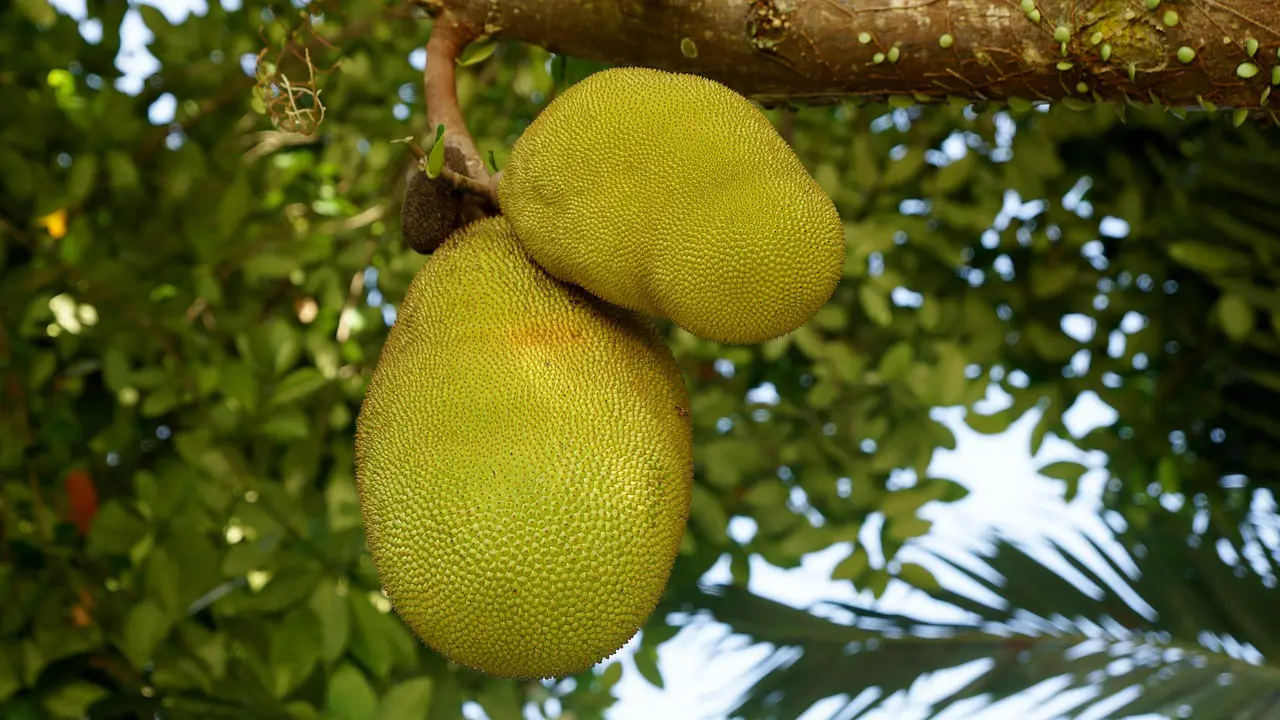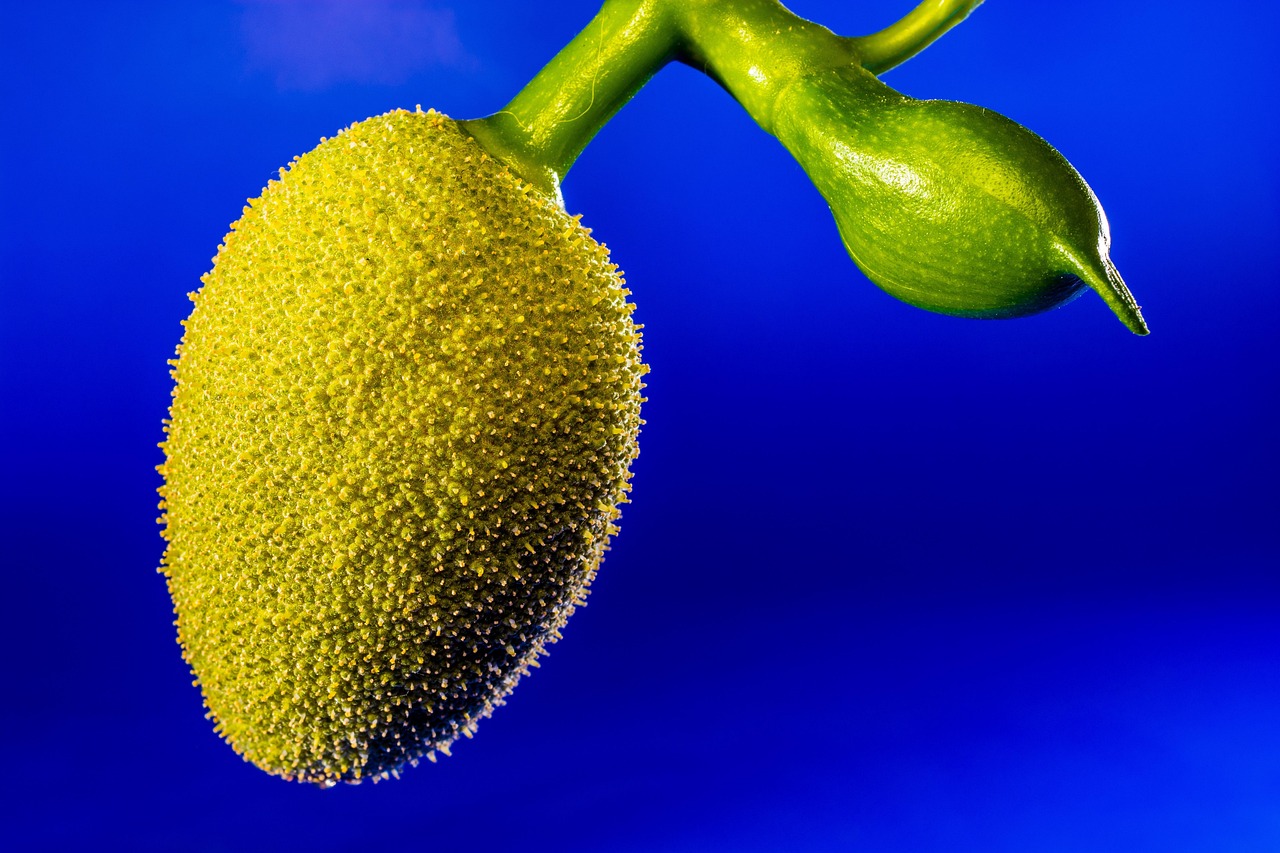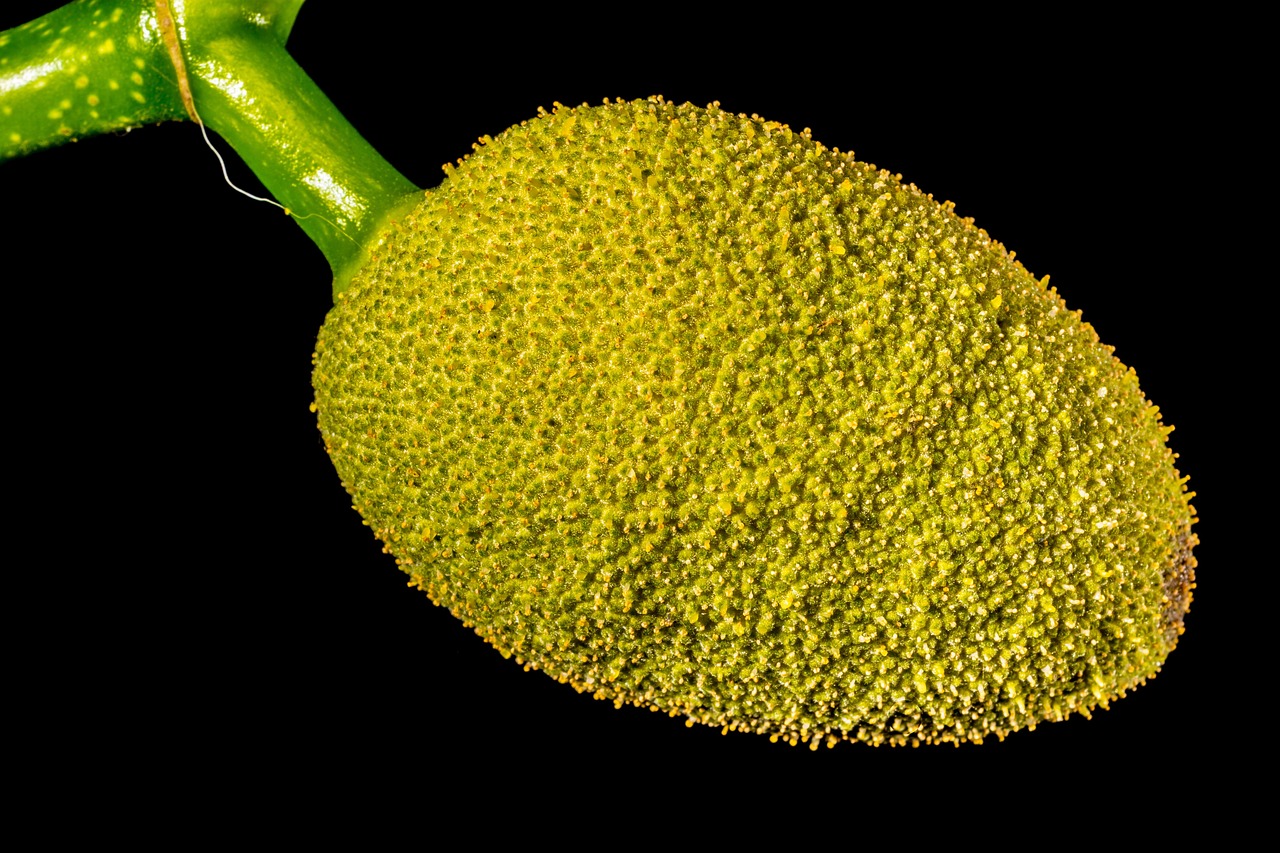The jackfruit tree has a moderate growth rate, typically reaching its full height of 30 to 50 feet in about 10 to 15 years. Under optimal conditions, it can begin producing fruit in just 3 to 4 years after planting.
Understanding the Jackfruit Tree
The jackfruit tree, scientifically known as Artocarpus heterophyllus, is native to South Asia but has gained popularity in tropical regions worldwide. It is renowned for its large, sweet fruits that can weigh up to 80 pounds. The tree thrives in warm, humid climates and is well-suited for tropical fruit production.

The growth rate of the jackfruit tree is influenced by various factors such as climate, soil quality, and care provided. Understanding these factors is essential for successful cultivation and maximizing fruit yield.
Growth Stages of the Jackfruit Tree
The growth of a jackfruit tree can be divided into several stages:
- Seed Germination: This stage lasts about 2 to 3 weeks. Seeds require warmth and moisture to sprout.
- Seedling Stage: Lasting approximately 6 to 12 months, seedlings need protection from harsh sunlight and strong winds.
- Juvenile Stage: From 1 to 3 years, the tree develops a strong trunk and branches. It begins to grow significantly during this phase.
- Mature Stage: Starting around 3 to 4 years, the tree will begin to produce fruit, reaching full maturity by 10 to 15 years.
Ideal Conditions for Growth
To achieve optimal growth rates, certain conditions must be met:

- Climate: Jackfruit trees thrive in tropical climates with temperatures ranging from 70°F to 100°F.
- Soil: Well-drained, fertile soil rich in organic matter is crucial for healthy growth.
- Water: Regular watering is necessary, especially during dry spells. However, overwatering should be avoided to prevent root rot.
- Sunlight: Full sun exposure is ideal, as it aids in photosynthesis and overall tree health.
Nutrient Requirements
A jackfruit tree requires specific nutrients for optimal growth. These include:
| Nutrient | Function | Sources |
|---|---|---|
| Nitrogen | Promotes leaf growth and overall health | Compost, manure, legumes |
| Phosphorus | Supports root development and flowering | Bone meal, rock phosphate |
| Potassium | Aids in fruit development and disease resistance | Potassium sulfate, greensand |
Pest and Disease Management
Maintaining the health of jackfruit trees involves vigilant pest and disease management. Common pests include:
- Fruit flies: Can damage developing fruits.
- Aphids: May affect young leaves and shoots.
- Scale insects: Can weaken the tree by sucking sap.
To protect against these issues, regular monitoring and organic pest control methods are recommended. This ensures a healthy yield of fruit as the tree matures.

Harvesting Jackfruit
The harvesting of jackfruit typically occurs when the fruits are mature but not fully ripe. Mature fruits have a distinct size and shape, making them easier to identify. Harvesting is usually done by cutting the fruit from the tree using a sharp knife or saw.
The timing of harvest is crucial as it affects the quality of the fruit. Proper harvesting techniques ensure that the jackfruit reaches its peak flavor while minimizing damage to the tree.
Factors Influencing Jackfruit Tree Growth Rate
The growth rate of jackfruit trees can be affected by several environmental and management factors. Understanding these influences can help growers optimize conditions for faster and healthier tree development.
Climate Variability
Jackfruit trees thrive in tropical climates, but specific climatic conditions can significantly impact their growth rates. Here are some key climate factors:

- Temperature: Ideal temperatures range from 70°F to 100°F. Extreme cold can stunt growth or even kill young trees.
- Humidity: High humidity levels promote healthy growth and fruiting. Low humidity can lead to stress and reduced yield.
- Rainfall: Jackfruit trees require consistent moisture. They benefit from 40 to 60 inches of rainfall annually, with well-distributed rainfall during the growing season.
Soil Quality and Preparation
The type and quality of soil play an essential role in the growth of jackfruit trees. Here are important soil considerations:
- Drainage: Well-drained soils prevent root rot and support healthy growth. Heavy clay soils can hinder growth due to poor drainage.
- pH Level: Jackfruit trees prefer a slightly acidic to neutral pH range of 5.5 to 7.0. Soil testing can help determine necessary amendments.
- Organic Matter: Incorporating organic matter, such as compost, improves soil fertility and structure, promoting robust tree growth.
Irrigation Practices
Irrigation is crucial, especially during the dry season. Here are effective irrigation practices:
- Drip Irrigation: This method delivers water directly to the root zone, minimizing water loss and ensuring adequate moisture.
- Mulching: Applying organic mulch around the base of the tree retains soil moisture and regulates temperature.
- Watering Schedule: Young trees need regular watering until established. Mature trees may require less frequent watering as they develop a deeper root system.
Pruning for Growth Enhancement
Pruning is an important practice that can influence the growth rate and overall health of jackfruit trees. Proper pruning techniques help shape the tree and improve air circulation.
Benefits of Pruning
The benefits of pruning jackfruit trees include:
- Improved Airflow: Reducing dense foliage allows better airflow, which helps prevent diseases.
- Increased Light Penetration: Pruning enhances light exposure to lower branches, promoting fruit development.
- Better Structure: A well-pruned tree has a stronger structure, making it less susceptible to storm damage.
When and How to Prune
The best time to prune jackfruit trees is during the dry season, before the onset of new growth. Here are steps for effective pruning:
- Remove dead or diseased branches to maintain tree health.
- Thin out crowded branches to improve airflow and light penetration.
- Avoid excessive cutting; aim for moderate pruning to maintain a balanced shape.
Pest and Disease Resistance Strategies
Effective management of pests and diseases is vital for ensuring a healthy growth rate for jackfruit trees. Here are some strategies to enhance resistance:
Cultural Practices
Cultural practices that promote resilience include:
- Crop Rotation: Rotating crops helps break pest cycles and improves soil health.
- Diversity Planting: Growing companion plants can deter pests naturally while enhancing soil nutrients.
- Sanitation: Regularly removing fallen leaves and fruits reduces potential breeding grounds for pests.
Organic Pest Control Methods
Utilizing organic pest control can minimize chemical use while protecting the environment. Here are some options:
- Nematodes: Beneficial nematodes can control soil-borne pests.
- Neem Oil: This natural pesticide disrupts insect feeding and reproduction without harming beneficial insects.
- Pheromone Traps: These traps attract and capture specific pests, reducing their populations effectively.
By implementing these strategies, growers can enhance the growth rate of their jackfruit trees while ensuring a sustainable approach to pest management.
Cultivating Jackfruit Trees for Optimal Growth
Successful cultivation of jackfruit trees extends beyond planting and watering. It involves understanding various cultivation techniques that can enhance growth rates and fruit production. This section delves into advanced practices that can be adopted by growers to ensure a healthy and productive jackfruit orchard.
Soil Management Techniques
Soil management is crucial for promoting the growth rate of jackfruit trees. Here are effective techniques that can improve soil health:
- Cover Crops: Planting cover crops such as legumes can enhance soil nitrogen levels and prevent erosion.
- Soil Amendments: Regularly adding organic matter, like compost or well-rotted manure, can improve soil structure and fertility.
- Mulching: Utilizing organic mulch not only conserves moisture but also suppresses weeds and adds nutrients as it decomposes.
Fertilization Practices
Proper fertilization is key to achieving optimal growth rates in jackfruit trees. The following practices can help:
- Soil Testing: Conducting soil tests allows growers to understand nutrient deficiencies and tailor fertilization accordingly.
- Balanced Fertilizers: Using balanced fertilizers that contain nitrogen, phosphorus, and potassium in appropriate ratios supports healthy growth.
- Foliar Feeding: Applying liquid fertilizers directly to the leaves can provide immediate nutrient uptake, especially during critical growth periods.
Climate Adaptation Techniques
Adapting to climatic conditions is essential for maximizing the growth potential of jackfruit trees. Growers can implement several strategies to cope with varying weather patterns.
Drought Management
In regions experiencing drought, it is vital to implement water conservation techniques:
- Rainwater Harvesting: Collecting rainwater during the wet season can provide supplemental irrigation during dry spells.
- Drip Irrigation Systems: These systems deliver water directly to the root zone, minimizing evaporation and ensuring efficient water use.
- Deep Rooting Practices: Encouraging deep root growth helps trees access moisture from deeper soil layers.
Flood Control Strategies
In areas prone to flooding, proactive measures can help protect jackfruit trees:
- Raised Beds: Planting trees in raised beds can improve drainage and reduce the risk of root rot.
- Drainage Systems: Installing drainage ditches or tiles can help manage excess water around the roots.
- Selecting Appropriate Varieties: Some jackfruit varieties may be more tolerant to wet conditions and can be chosen based on local climate.
Harvesting Techniques and Post-Harvest Management
The harvesting process is crucial for maintaining fruit quality and ensuring a successful crop yield. Proper techniques and post-harvest management practices can significantly enhance the value of jackfruit.
Harvest Timing and Techniques
The timing of harvest is critical for achieving the best flavor and texture. Here are recommended practices:
- Maturity Indicators: Harvest when fruits are large, firm, and have a distinct color change, indicating ripeness without being overripe.
- Harvest Tools: Use sharp knives or saws to cut fruits cleanly from branches, minimizing damage to both the fruit and the tree.
- Avoiding Bruising: Handle fruits with care to prevent bruising, which can lead to spoilage during storage.
Post-Harvest Handling
After harvesting, proper handling can preserve fruit quality:
- Cleansing Fruits: Gently wash harvested fruits to remove dirt and minimize microbial load.
- Storage Conditions: Store jackfruit in a cool, dry place away from direct sunlight to prolong freshness.
- Packing Techniques: Use breathable materials for packing to reduce moisture buildup and extend shelf life.
The Economic Aspects of Jackfruit Cultivation
Cultivating jackfruit trees can be economically beneficial. Understanding the market dynamics and potential profitability is essential for growers.
Market Demand and Pricing
The demand for jackfruit has been increasing due to its popularity as a meat substitute and its nutritional benefits. Factors influencing market prices include:
- Seasonality: Prices may fluctuate based on the harvest season, with higher prices during off-seasons.
- Quality Standards: Higher quality fruits fetch better prices in markets.
- Diversity in Products: Offering products like dried jackfruit or jackfruit chips can tap into different market segments and increase revenue streams.
Cost Considerations
Growers should also consider various costs involved in jackfruit cultivation, such as:
- Initial Investment: Costs associated with land preparation, seedlings, and irrigation systems are significant at the start.
- Maintenance Costs: Ongoing expenses include fertilization, pest management, and labor.
- Harvesting Costs: Labor costs for harvesting and post-harvest handling need to be factored into the overall budget.
A comprehensive understanding of these economic aspects enables growers to make informed decisions that maximize profitability in jackfruit production.
Challenges in Jackfruit Cultivation
While jackfruit cultivation presents numerous opportunities, it also comes with challenges that growers must navigate. Awareness and preparation can help mitigate these issues.
Environmental Challenges
Jackfruit trees are sensitive to extreme weather conditions. Some of the environmental challenges include:
- Climate Change: Fluctuations in temperature and rainfall patterns can affect growth rates and fruit yield.
- Pests and Diseases: Increased pest infestations and disease outbreaks can threaten tree health and productivity.
- Soil Degradation: Continuous cultivation without proper nutrient management can lead to soil depletion and reduced fertility.
Market Fluctuations
The market for jackfruit can be volatile, influenced by several factors:
- Competition: New entrants into the market may drive down prices, affecting profitability.
- Consumer Preferences: Changes in consumer preferences can impact demand for fresh jackfruit or processed products.
- Import Regulations: Stringent regulations regarding imports may affect the availability and pricing of jackfruit in certain regions.
Innovative Practices for Sustainable Growth
To overcome challenges and enhance growth, growers are adopting innovative practices that promote sustainability and efficiency. Here are some techniques that can be beneficial:
Agroforestry
Integrating jackfruit cultivation with other crops and trees can create a sustainable farming system:
- Biodiversity Improvement: Growing diverse plants alongside jackfruit trees can improve soil health and provide habitat for beneficial organisms.
- Shade Provision: Companion plants can provide shade, which may help reduce stress on jackfruit trees during hot weather.
- Pest Control: A diverse ecosystem can naturally regulate pest populations, reducing dependence on chemical pesticides.
Technology Integration
The use of technology in agriculture can greatly enhance jackfruit production:
- Precision Agriculture: Utilizing sensors and data analytics can help monitor soil moisture levels and optimize irrigation practices.
- Mobile Apps: Growers can access information on pest management, weather forecasts, and market prices through mobile applications.
- Drones: Drones can assist in assessing crop health and managing large orchards more efficiently.
Final Thoughts
The jackfruit tree is a remarkable species, known for its unique fruit and adaptability to tropical climates. Understanding its growth rate and the factors influencing it is crucial for successful cultivation. By implementing effective management practices and innovative approaches, growers can maximize their yields while navigating the challenges of production.
The economic potential of jackfruit cultivation is significant, especially as demand for sustainable and nutritious foods continues to rise. With proper planning, investment in quality practices, and an awareness of market dynamics, farmers can establish productive jackfruit orchards that contribute to both their livelihoods and the wider community.
As the global interest in jackfruit grows, it is essential for growers to remain informed about best practices, emerging technologies, and market trends to thrive in this evolving landscape. With dedication and adaptability, the future of jackfruit cultivation looks promising.
